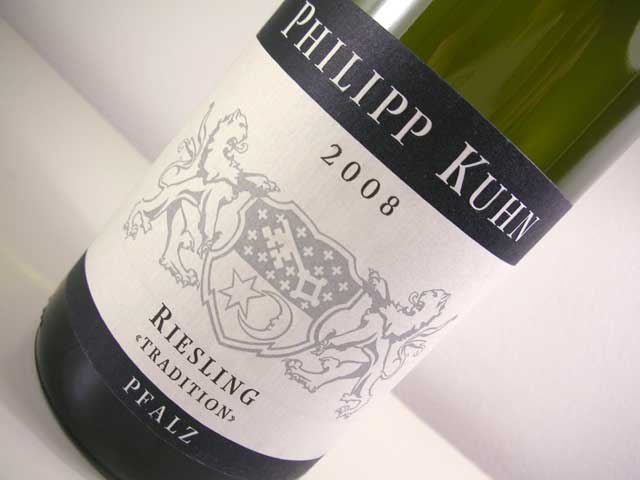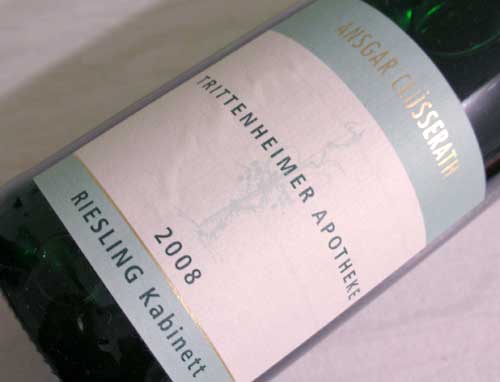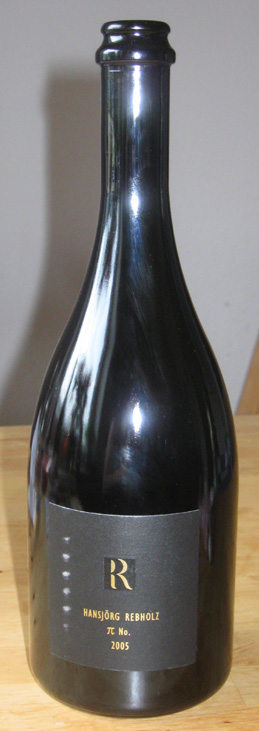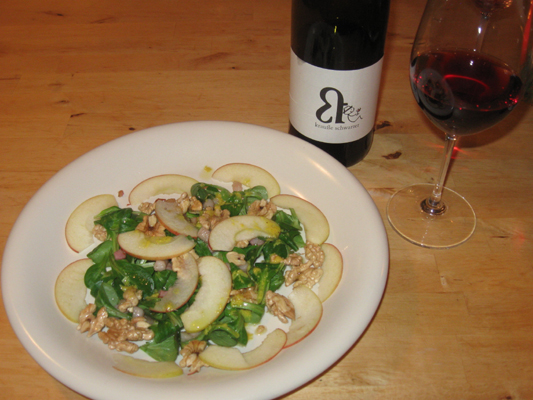Philipp Kuhn, Riesling Tradition, 2008
If you have ever come across the German village of Laumersheim, chances are it was because of a wine. Laumersheim is home to the Kinpser winery, a family owned estate that makes some of the best red wines you can get in Germany (and marvellous white wines too). And it is home to the Kuhn winery that is getting more and more attention, especially after Philipp Kuhn in 1992 - at the tender age of 20 - got involved in the family owned estate. You may be surprised to hear that the winery is not only producing some red wine, in fact about 50% of the wines made there are red. The delivery that brought this Riesling to London also included a Merlot! The story of red wine made by the Kuhns in the Palatinate will have to be told another night as tonight we are drinking the entry level Riesling from the Kuhn winery (entry level, by the way, does not mean mass-produced: harvests are limited to below 75 hl per hectare).






